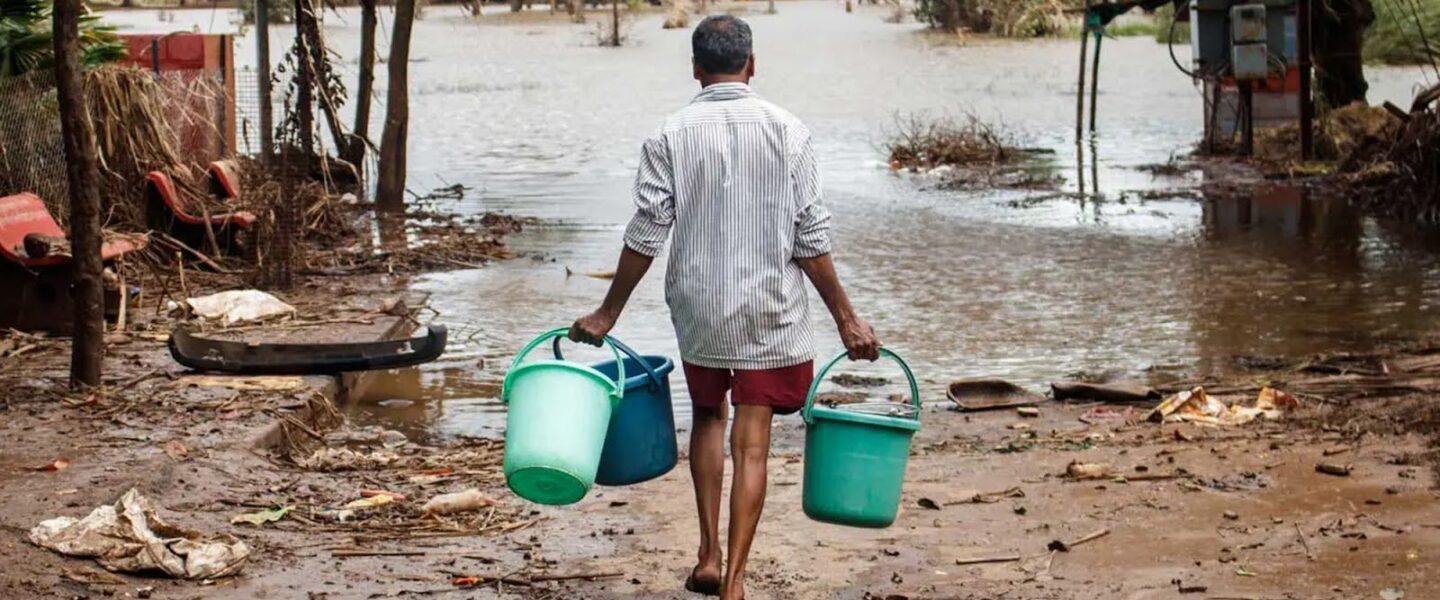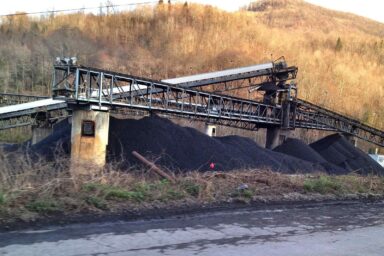The World Health Organization estimates 600 million people a year already suffer from foodborne illnesses.
|
Listen To This Story
|
Global warming has made it easier for bacteria and other germs to contaminate the food supply, and this little-discussed danger of climate change is teaching painful and sometimes life-threatening lessons to hundreds of millions of people every year. One of them is Sumitra Sutar, 75, of Haroli village in India’s Maharashtra state.
Five years ago, Sutar was eating leftover rice and lentil curry, her staple food for more than five decades. This time, her routine meal caused her to start vomiting “at least 15 times a day,” she recalled recently. Eventually, she learned the culprit was a foodborne bacteria that produces toxins that can lead to vomiting, eye inflammation, and respiratory tract infections. Global warming has made the world more welcoming for the pathogen, Bacillus cereus, to grow in food stored after cooking. One study found that domestic rice cooking can be insufficient to inactivate its spores.
Researchers and health workers are sounding the alarm: The food supply is vulnerable to greater spoilage due to more frequent extreme heat, floods, and droughts, boosting the risk of contamination and outbreaks of foodborne diseases. Extreme heat can hasten food spoilage by allowing bacteria to multiply faster, experts say. Rising waters from severe floods can contaminate crops with sewage or other unwanted waste products, while higher humidity can promote growth of salmonella bacteria on lettuce and other produce eaten raw. The World Health Organization estimates that 600 million people fall sick every year from foodborne diseases, leading to 420,000 deaths. Children under five years old are at especially high risk, and every year 125,000 children lose their lives because of such largely preventable diseases.
Many factors including farming practices and global food supply chains have made such problems much more prevalent, and a growing body of research has highlighted how climate change also plays a big role.
A review study published in eBiomedicine this year found that for every one degree Celsius rise in temperature, the threat of non-typhoidal salmonella and campylobacter, bacteria that can make people sick, usually by causing food poisoning, increased by 5 percent.
A Greenhouse for Germs
Sutar’s village has reported a severe rise in the temperature in the past decade, with summer heat that can top 43 degrees Celsius (109.4 Fahrenheit). Many people across the region have reported a rise in foodborne illnesses, says community health care worker Padmashri Sutar, also Sumitra Sutar’s daughter-in-law.
A review article published in Climatic Change noted that higher temperatures and changing precipitation patterns lead to the proliferation of foodborne pathogens, including the most common: salmonella, Escherichia coli (E. coli), and Campylobacter jejuni.
“Increased temperatures promote the growth of bacteria like listeria, campylobacter, and salmonella in perishable foods like meat, dairy, and seafood,” said one of its authors, Ahmed Hamad, lecturer of food hygiene and control at Egypt’s Benha University.
A study from northwestern Mexico examined how environmental factors influenced the outbreak of salmonella species, the bacteria responsible for many foodborne diseases globally. It found the maximum prevalence in areas with higher temperatures between 35 and 37 degrees Celsius (95-98.6 Fahrenheit) and annual precipitation greater than 1,000 mm (39.4 inches).
Another paper published in Applied and Environmental Microbiology this year found climate change will increase the risk of foodborne diseases caused by Salmonella enterica, noting that high humidity boosts salmonella growth. This bacteria already affects 1.2 million people in the US annually.
In extreme heat, ready-to-eat products pose a higher risk of causing foodborne illnesses, warns Hudaa Neetoo, associate professor in microbiology and food safety at the University of Mauritius.
“During heat waves, the level of pathogenic microorganisms in these products can increase considerably and attain a level sufficient to cause illness because they do not require any final heat-killing step.”
Along with heat waves, she said, flooding can cause manure runoff from adjacent animal pastures to croplands, contaminating agricultural produce including salads, vegetables, and leafy greens meant to be consumed raw.
“Animal manure can harbor human pathogens such as enteropathogenic E. coli, salmonella, and campylobacter, and research has found that domestic washing alone is not sufficient to decontaminate produce and bring the levels of organisms down to a safe level,” she said.
She also warned of systemic contamination of produce by pathogens that enter crops through the roots and become internalized and harder to get rid of.
Another direct impact of flooding, overflowing sewage systems, “can contaminate crops and water sources with harmful pathogens like salmonella, E. coli, and norovirus. Flooding can also introduce pathogens into irrigation systems, increasing the risk of crop contamination,” Hamad said.
Indirect effects of climate change can also lead to outbreaks of foodborne diseases. A paper published in the Journal of Health Monitoring mentioned that as fresh water becomes scarcer, treated wastewater may be used to irrigate crops, potentially carrying pathogens from animal or human feces. This can heighten the risk of contamination.
“When communities rely entirely on wastewater reuse, the primary objective must be to treat this water to a level of safety that poses no risk to consumers,” said Martin Richter, head of a food safety unit at the German Federal Institute for Risk Assessment and one of the paper’s authors. “Sometimes one copy of the pathogen is enough to cause disease,” so wastewater must be thoroughly treated. He suggested prioritizing fresh water to irrigate foods typically consumed raw while using treated wastewater on crops that are generally cooked.
“Cooking food at 70 degrees Celsius for at least two minutes destroys most of the pathogens that may be present on its surface,” he said.
More Precautions Needed
Community health care worker Padmashri Sutar says that people in her village have stopped cooking with river water and rely entirely on groundwater.
“In the past, many people in the village fell sick after drinking river water, so they completely avoid it now.”
She said many people need education on the connection between climate change and foodborne illnesses.
“To make people aware of this, I give simple examples, such as the rise in frequency of food spoilage.”
She also urges people to clean their water containers after floods or heavy rainfall, and she discusses how pathogens and bacteria can now contaminate vegetables and milk much more easily.
People who have participated in awareness sessions now eat fewer leftovers.
“They prefer cooking fresh food now and buying only the required number of vegetables,” she said.
Health care workers need more long-term data on climate change and foodborne illnesses, Neetoo said.
“Universities should conduct long-term surveillance studies and trend analysis to allow better prediction of the impact of climate change on food systems.”
She also advocates researching new ways to decontaminate warehouses, containers, and food products affected by floodwater.
Hamad called for improving surveillance and monitoring to detect potential outbreaks early. He added that infrastructure should be improved to ensure food processing and distribution systems can withstand extreme weather events and sanitation infrastructure is robust, especially in flood-prone areas.
Common Misconceptions
Experts stressed the need to educate people about the role of climate change in foodborne illnesses.
“Many people see climate change as purely an environmental issue, without recognizing its profound effects on public health, including the increased risks of foodborne diseases,” Hamad said.
A prominent misconception is that cold weather kills all pathogens.
“Certain bacteria, like listeria, can still grow at cold temperatures, posing risks even in cooler climates,” he explained.
Sutar said people often interrupt her when she talks about the reasons behind the rise in foodborne illnesses. They repeat the common belief that poor food handling is the sole reason behind these diseases. She patiently explains how climate change exacerbates the growth of pathogens in the environment and water sources.
“People don’t want to accept that even climate change can lead to foodborne illness,” Sutar said, adding that many in her region don’t report such illnesses because they don’t take them seriously and think they’re an isolated case that does not warrant public attention. Meanwhile, many other people in the area also suffer from vomiting, fever, gastrointestinal problems, and several other issues because of eating contaminated food.
Sutar said she has become an evangelist spreading the word about climate and the food supply.
“I ask people not only to observe the changing climatic patterns but also carefully consider what’s on their plate.”
This story by Sanket Jain was originally published by Yale Climate Connections and is part of Covering Climate Now, a global journalism collaboration strengthening coverage of the climate story.





